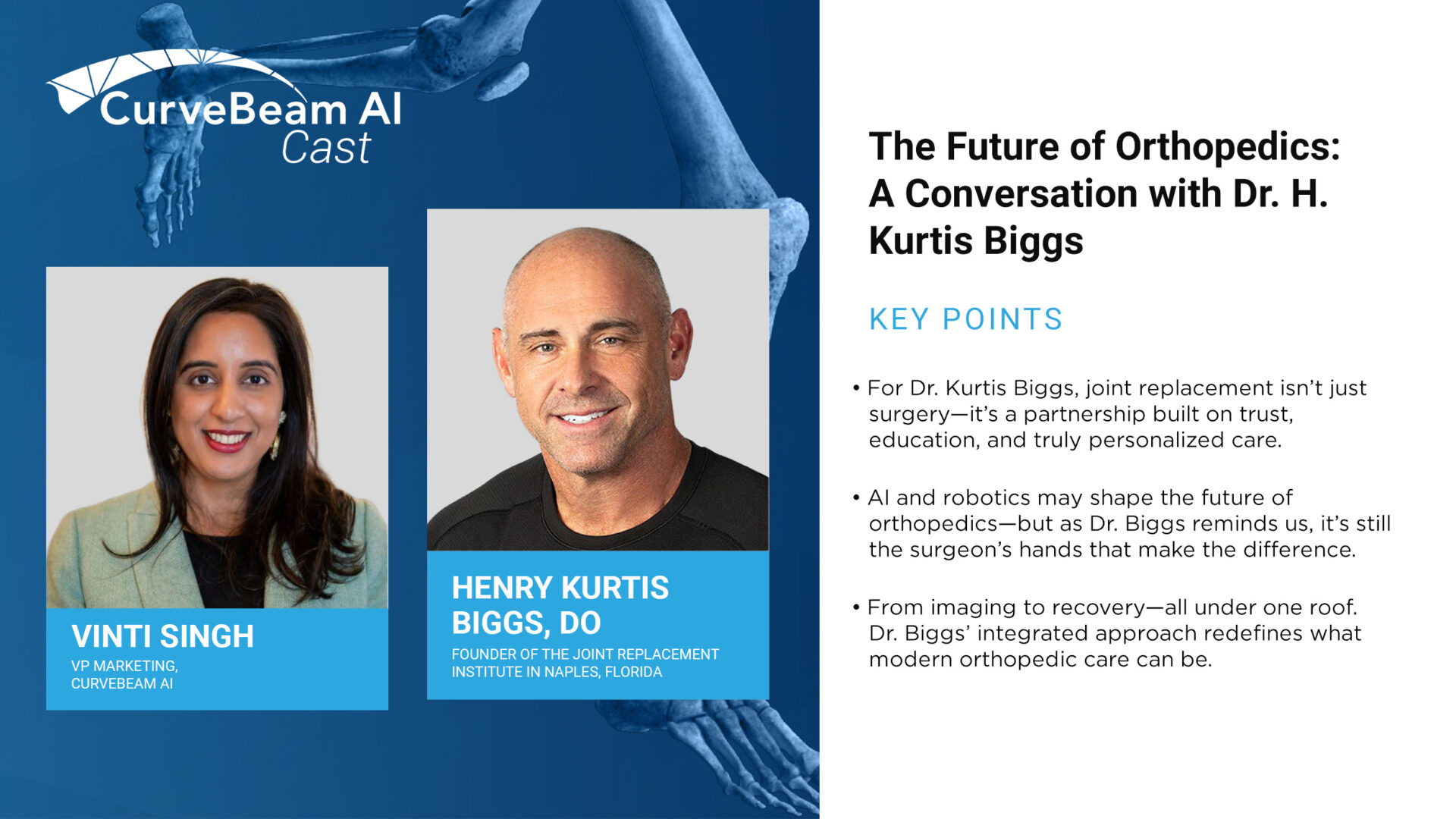In a recent episode of CurveBeam AI Connect, Vice President of Marketing Vinti Singh spoke…

Weightbearing CT Helps Orthopedists More Effectively Treat Hindfoot and Ankle Deformities
Dr. Arne Burssens, orthopedic resident at Ghent University Hospital in Flanders, Belgium, held a webinar on June 5, 2017 titled “Pitfalls in Hindfoot and Ankle Deformities Tackled by Weightbearing CT.” Dr. Burssens discussed his clinical experience with CurveBeam pedCAT weightbearing CT and how it has improved patient care. He also shared a few specific case studies to provide a deeper look into his work, and concluded by answering questions from attendees.
Dr. Burssens covered two main topics. The first, “Quantification of Hindfoot Alignment,” touched on deformities, normal alignment, and post-operative correction. The second, “Quantification of Syndesmotic Lesions,” discussed syndesmotic ankle sprains and Maisonneuve fractures.
In his hindfoot studies, Dr. Burssens used a combination of the Cobey method and the Saltzman inferior point to measure the hindfoot angle using weightbearing CT. This method examines the intersection of the anatomical tibia axis and the talocalcaneal axis as the patient’s foot is aligned to the 2nd ray in the axial plane. The method creates a standardized foot position to avoid rotational errors and eliminates the need to take additional measurements.
The goal of the first study was to obtain useful and reproducible clinical measurement methods to determine hindfoot alignment. Using the CurveBeam pedCAT, 30 valgus and 30 varus malalignment cases were studied. The results showed a high correlation with both clinical reconstruction and talar shift.
The second study looked at patients with minor ankle trauma who still complained of pain after some weeks. The patients had normal hindfoot alignment, so density analysis of the inferior calcaneus point was studied to see if additional weightbearing was causing deformation. The results found a more neutral alignment in these patients than the generally accepted measurement. This condition would not typically be detected using non-weightbearing CT or X-Rays.
Dr. Burssens also wanted to see if weightbearing CT results could be improved through the use of 3D alignment, rather than just through the axial plane method. Engineers at Materialise conducted a 3D modeling study that incorporated the tibia anatomical axis, talocalcaneal axis, the calcaneal inferior point, and the talar point representing the center of gravity. The 3D hindfoot angle was defined as the interaction of both the tibia anatomical axis and the talocalcaneal axis. This 3D method demonstrated superior reliability when using computer generated landmarks.
Another study investigated the influence of solitary calcaneal medial osteotomy (CMO) on hindfoot alignment. Twelve valgus misalignments were studied pre- and post-op after fixation with double screw or step plate. The results showed a significant improvement in hindfoot post-operative alignment, and weightbearing CT showed good correlation with TALAS software.
Dr. Burssens concluded from these studies that weightbearing CT gives an easily interpreted view of hindfoot configuration that helps overcome superimposition and rotational errors, and shows a clear visualization of the subtalar joint. The improved hindfoot measurement methods presented help show deformities, neutral alignment, and post-deformity correction. They also complement TALAS software. 3D measurement shows promise to provide even more accurate trackable data for numerical modeling, leading to more evidence-based surgical corrections.
In the second topic, Dr. Burssens presented two case studies of syndesmotic ankle sprain patients. He used weightbearing CT to determine the extent of the ankle lesion. In order to create an objective mode, three points were calculated: the most lateral, superior, and anterior tip of the fibula. The lesion was then quantified by its deviation from a normal fibula.
Dr. Burssens concluded that weightbearing CT allows surgeons to detect and quantify subtle lesions in a syndesmotic ankle sprain. In Maisonneuve fractures, the data can serve as essential tool for pre-operative planning. More research is needed and a control group is currently being measured to provide a reference.
To learn more about the CurveBeam pedCAT weightbearing CT, visit CurveBeam.com.




